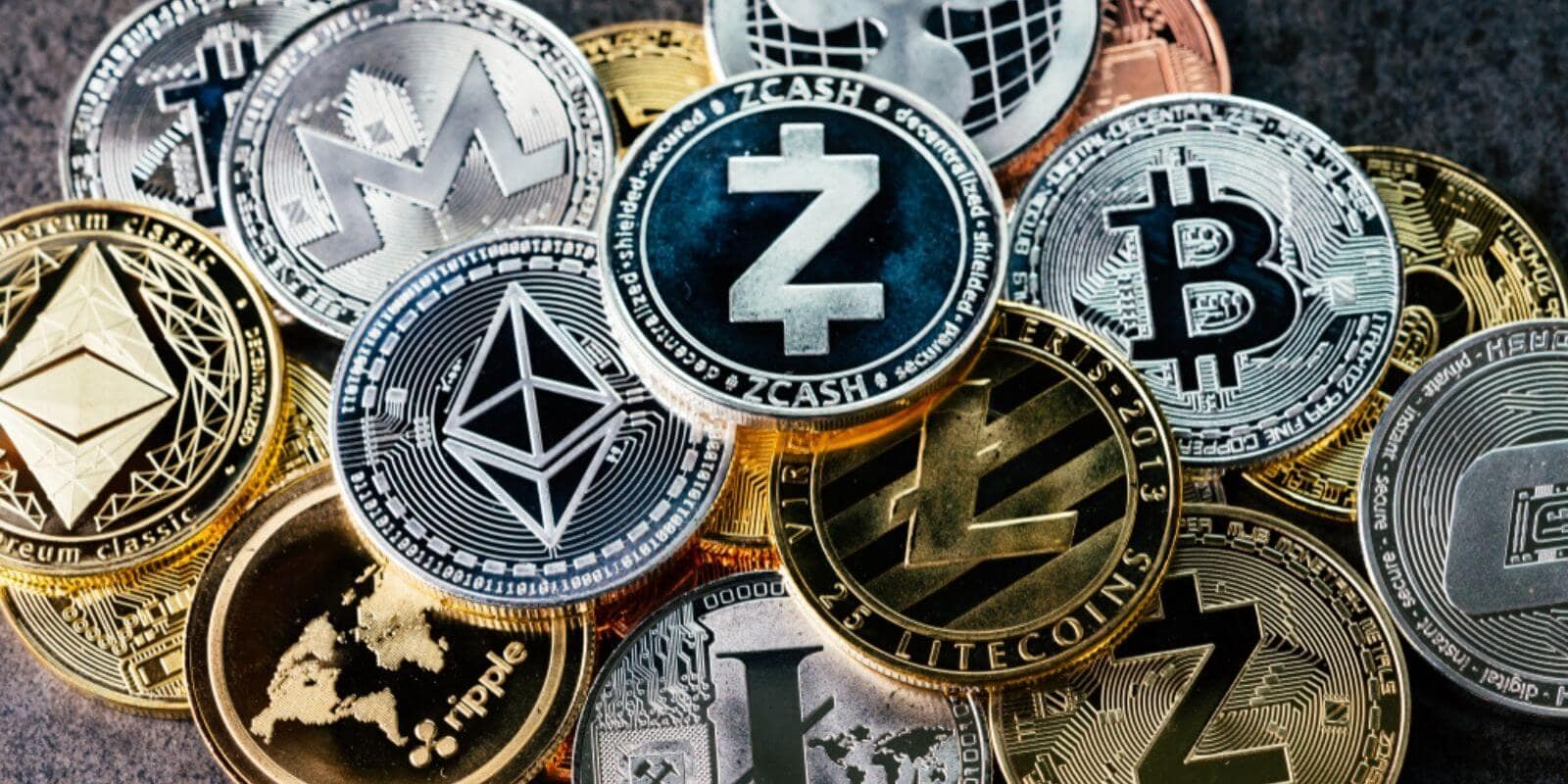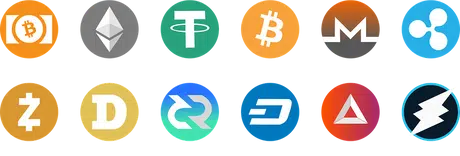All about cryptocurrency

Cryptocurrency represents a major innovation in the world of finance, paving the way for a decentralized system thanks to blockchain. YOU can invest in it to earn a lot of money. Their popularity continues to grow, attracting an ever-wider audience wishing to understand and explore this universe.
But between Bitcoin, altcoins, mining, wallets and exchange platforms, the language of cryptocurrencies can quickly seem complex for the uninitiated. In this article, we offer you a complete overview of cryptocurrencies.
You will discover the origins of this disruptive innovation, its key mechanisms, the actors involved, its potential and its limits. Thanks to these solid foundations, you will have all the tools to understand and follow the abundant crypto news.

Get 200% Bonus after your first deposit. Use this promo code: argent2035
So come on board with us to finally unlock the secrets of cryptocurrencies! This accessible introduction will allow you to confidently explore this exciting universe.
Let's go!!!
???? What is a cryptocurrency?
It is a virtual currency based on blockchain technology. The blockchain is a ledger in which transactions are recorded and are monitored by independent programmers as verifiers.
In this way, transactions do not go through a single central place, but are approved from different sites.
Cryptocurrency consists of a digital file with a unique code which is read by various programs which are used to view it, store it and carry out transactions. Cryptocurrency is therefore a new form of money which brings a different way of interacting with it.
(I.e. The characteristics of cryptocurrency
The first characteristic of cryptocurrency is Cryptography. It uses encryption techniques to make secure payments and collections. These are decentralized currencies, they must not be controlled by any institution. There is none possibility of falsification or duplication.
A cryptographic system protects users. Furthermore, cryptocurrencies have no intermediaries, there is direct person-to-person contact.
The transactions are irreversible. Once payment has been made, there is no possibility of cancellation. They can be exchanged for other currencies. When it comes to user privacy, there is no need to reveal your identity when doing business.
(I.e. The origin of cryptocurrencies
Throughout history there have been many ways exchange of goods and servicess. All have undergone evolutions and changes or, directly, they have disappeared.
This is the case of barter or the use of precious materials, which has given way to the system that has worked until now, notes and coins. However, in an age where technology is gaining more ground every day, a more age-appropriate medium of exchange is needed. It's cryptocurrency.
In the wake of the cypherpunk movement in the 80s, cryptocurrency appeared. This art defended the widespread use of writing with secret keys that could only be understood by those who knew how to decipher them.
A decade later, David Chaun created Digicash to provide a centralized electronic money system allowing for more secure and anonymous transactions. Bitcoin was one of the first cryptocurrencies to appear on the market. He did it at the hands of the Japanese Satoshi Nakamoto after the 2008 financial crisis.
A mysterious character whose identity is not known, it is even suspected that it could be the name of a group. That year, he published an article on bitcoin and sparks debate which results in the creation of software to carry out transactions.
🌿 The different types of cryptocurrencies
Different cryptocurrencies are forms of digital money that use cryptography to secure transactions and control the creation of new units. Each type of cryptocurrency has its own unique characteristics, such as the underlying technology, specific use cases, and potential benefits.
These cryptocurrencies offer various investment and payment options, as well as opportunities to participate in decentralized projects.
🌿 Payment cryptocurrencies
A payment cryptocurrency is a digital currency designed to carry out transactions and serve as a means of exchange, in Peer to Peer, without requiring a centralized intermediary.
⚡️Bitcoin
Created in 2009 by Satoshi Nakamoto, Bitcoin (BTC) remains the most famous cryptocurrency and the first blockchain-based decentralized currency. It allows peer-to-peer payments without a central authority.
Bitcoin is intended to be an anonymous means of payment and a store of value decorrelated from banks and States. Despite its volatility, il attracts more and more institutional. Its rate of new BTCs created is limited, reinforcing the scarcity.
⚡️ Litecoin
Litecoin (LTC) is a cryptocurrency created in 2011 largely inspired by Bitcoin but with faster transactions and lower fees. It can process one block every 2 minutes 30 seconds against 10 minutes for Bitcoin.
Its maximum supply is 84 million LTC. Like BTC, Litecoin allows decentralized payments between individuals.
⚡️Ripple (XRP)
Created in 2021, Ripple focuses on cross-border transfers for banks and financial institutions. Its XRP Ledger allows ultra-fast transactions of 3 to 5 seconds against several minutes for Bitcoin.
The total supply of 100 billion XRP is already premined. Ripple is clearly targeting the international interbank payments market.
⚡️ Stellar Lumens (XLM)
Stellar is an open-source blockchain launched in 2014 facilitating cross-border transactions. Its Lumens (XLM) aims to connect financial systems and reduce costs.
Stellar focuses on financial inclusion in emerging countries. Transactions are confirmed in 3-5 seconds. Low fees make micropayments accessible.
⚡️ Monero (XMR)
Monero is a privacy- and anonymity-oriented cryptocurrency launched in 2014. Addresses and transaction amounts are clouded using circle signature technology.

Get 200% Bonus after your first deposit. Use this official Promo code: argent2035
Unable to trace payments or associate addresses with individuals. This enhanced confidentiality makes it an anonymization tool. But also the currency of predilection for illicit activities.
🌿 Smart contract platforms
A platform of smart contracts or programmable blockchain is a blockchain which makes it possible to deploy computer programs called " smart contracts ».
Un Smart contract is a self-executing program when certain conditions are met. It works automatically on the blockchain without human intervention. Here are some examples :
⚡️ Ethereum (ETH)
Ethereum is the first programmable blockchain thanks to its language of smart contracts. Launched in 2015, Ethereum makes it possible to create decentralized applications (DApps) and tokenize assets.
The Solidity language is used for smart contracts. Ethereum popularized ERC-20 tokens. But it suffers from scalability problems, hence new competitors.
⚡️ Cardano (ADA)
Developed by researchers, Cardano relies on a scientific approach. Its native ADA and proof-of-stake blockchain offer speed and low cost.
Cardano aims to enable more accessible decentralized finance (DeFi) via auditable smart contracts and community governance.
⚡️ Polkadot (DOT)
Polkadot aims to enable blockchain interoperability through its linked chain connected parachains technology. Projects can communicate with each other easily. DOT is its native governance token. Polkadot relies on an open community and great flexibility.
⚡️ Solana (SOL)
Solana is a blockchain ultra-fast and low-cost using the proof-of-history mechanism. It aims to enable highly scalable DeFi applications.
Its SOL token is used for governance and transaction fees. Solana bets on speed with near-limitless capabilities and optimized smart contracts.
⚡️Near Protocol (NEAR)
Near Protocol is a decentralized, open source Layer 1 blockchain focused on scalability and accessibility. It uses an original consensus model called Nightshade.
Near aims to enable mainstream dApps with a simple user experience. Its native token NEAR is used for governance and fee payment.
🌿 Stablecoins
A stablecoin is a type of cryptocurrency whose price is stabilized by a peg mechanism on a real asset, most often a currency like the US dollar. Learn more about stablecoins. Here are the main ones:
⚡️ Tether (USDT)
Tether is the first and largest stablecoin. Launched in 2015, USDT aims to digitally replicate the US dollar by being backed by the dollar.
Each USDT is worth 1 USD. Tether allows you to benefit from the speed and flexibility of cryptos without volatility thanks to its indexation to the dollar. But the real backing to reserves remains controversial.
⚡️ USD Coin (USDC)
USDC is a stablecoin developed by Circle and launched in 2018. It is transparently backed by the US dollar, with certified reserves.
USDC aims to offer a fast, secure and reliable digital substitute for the traditional dollar. She has become the 2nd largest stablecoin.
⚡️DAI
DAI is a decentralized stablecoin created in 2017 on Ethereum. Unlike other stablecoins, it is not backed by a currency but to cryptos given as collateral.
Its course is maintained at $1 thanks to an incentive mechanism. DAI aims to be a decentralized alternative to classic stablecoins.
⚡️ Binance USD (BUSD)
BUSD is a stablecoin issued by Binance backed by the US dollar held with partner banks. Each BUSD is worth 1 USD.
The backing of audited bank accounts guarantees stability. BUSD aims to provide liquidity between the traditional dollar and cryptocurrencies on the Binance platform.
⚡️TerraUSD (UST)
TerraUSD is an algorithmic stablecoin that maintains its 1:1 peg with the dollar through an arbitrage mechanism involving its sister cryptocurrency Luna.
Unlike currency-backed stablecoins, TerraUSD's supply scales algorithmically. It stabilizes around $1 on its own.
🌿 NFTs (Non-Fungible Tokens)
NFTs (Non-Fungible Tokens) or non-fungible tokens are cryptocurrencies representing a unique digital asset, and therefore cannot be replaced by another identical one.
Learn more about NFTs. Here are some examples :
⚡️ Cryptopunks
Cryptopunks are some of the first NFTs ever created, in 2017. These randomly generated pixelated avatars have seen a huge following, with some selling for millions.
Cryptopunks inspired modern NFTs by their uniqueness and rarity. They remain an iconic project.
⚡️ Bored Ape Yacht Club
This collection of 10 NFTs featuring algorithmically and uniquely drawn monkeys has become a huge cultural phenomenon.
Its success is due to its community and the advantages granted to the holders. Some Bored Apes have sold for several million dollars.
⚡️ Doodles
Doodles is another successful NFT project consisting of unique and colorful abstract drawings. The success of Doodles comes from its minimalist aesthetic and its community. The rarity of each Doodle's traits make them sought-after NFTs by collectors.
⚡️Azuki
Azuki is a collection of NFTs launched in 2022 featuring 10 manga-style avatars drawn by an algorithm. Besides their signature aesthetic, Azuki is banking on an ambitious roadmap in the metaverses. The success was immediate.
⚡️Moonbirds
Moonbirds is a project from Proof Collective, the creator of Cryptopunks. These 10 NFTs with colorful bird designs have seen immense interest since their launch, despite their high price. They are part of the most prestigious NFT collections.
🌿 Metaverse cryptocurrencies
A metaverse cryptocurrency is a cryptocurrency native to a virtual world or metaverse, which serves as a medium of exchange to purchase goods and services within this digital universe.
En know more about the metaverse… Some examples of metaverse cryptos:
⚡️ Decentraland (MANA)
Decentraland is a crypto metaverse that allows you to buy virtual land in the form of NFTs. Its users can then build their own worlds and applications on it.
MANA is its ERC-20 token used for purchases in this virtual universe. Decentraland has met with great enthusiasm.
⚡️ The Sandbox (SAND)
The Sandbox is a gaming metaverse where users can purchase virtual land in the form of NFTs to monetize.
SAND is its ERC-20 utility token used to buy assets in this virtual world. The Sandbox attracts many brands wanting to establish themselves in this crypto universe.
⚡️ Enjin Coin (ENJ)
Enjin Coin powers the Enjin platform which allows you to create websites and applications on the blockchain. Its ENJ token is used to back NFTs.
It is used in play-to-earn blockchain games. Enjin aims to bring NFT and blockchain technology to the world of gaming.
⚡️ Gala (GALA)
Gala is the token of the Gala Games project which develops play-to-earn blockchain games. GALA holders can vote on decisions. Gala Games wants to create a blockchain game platform self-managed by developers and players.
⚡️ Axie Infinity (AXS)
Axie Infinity is a Pokémon type game in NFT on the blockchain. Players raise, collect, and battle creatures called Axies.
Its AXS governance token also allows participation in certain game modes. Axie has helped popularize the concept of play-to-earn.
🌿 High Potential Emerging Cryptocurrencies
High-potential emerging cryptocurrencies refer to recent crypto-assets with promising technological innovations and significant development potential. Some examples :
⚡️ Internet Computer (ICP)
Internet Computer is an ambitious project to extend the Internet in a more open, secure and less centralized version.
Its protocol makes it possible to host dApps directly on the internet. Its native PKI is used for governance and compute resources. A promising project.
⚡️ Theta (THETA)
Theta is a decentralized blockchain designed for streaming video. It aims to make more efficient streaming, cheaper and more innovative thanks to a decentralized infrastructure. Its THETA token rewards users for sharing bandwidth and resources.
⚡️ Chilliz (CHZ)
Chiliz powers the Socios platform which issues tokens for sports teams and leagues. Fans can purchase these tokens to vote and interact.
An innovative concept of crypto applied to sport. Chiliz’s CHZ token has surged strongly recently.
⚡️ WAX
Worldwide Asset eXchange (WAX) is a decentralized blockchain dedicated to NFTs. She wants to make the creation and trading of NFTs accessible to all.
Its WAX token is used for transacting and voting. WAX focuses on gaming and collection NFTs.
⚡️ Hedera Hashgraph (HBAR)
Hedera Hashgraph is an ultra-fast alternative blockchain working with a consensus-based proof system.
It can handle more than 10 transactions per second. Its HBAR token is used to secure the network and pay fees. A potential competitor to traditional blockchains.
How cryptocurrency gains or loses its value
Cryptocurrency can gain value on exchange platforms. The value of cryptocurrency increases depending on its supply and demand. The supply of a cryptocurrency depends on how many new coins are mined and how many current owners want to sell their coins.
The demand for a cryptocurrency depends on many factors. The demand will increase depending on the usefulness of owning the coins. This means that if the crypto currency system works well (i.e. fast transactions and low fees), if smart contracts become more mainstream and if more businesses start accepting crypto, the demand for crypto will increase.
Additionally, there is an increased demand for cryptocurrencies as an investment store of value.
How does cryptocurrency increase in value? Like any market, the value of cryptocurrencies fluctuates depending on the market's perception of its value at any given time. These fluctuations may be rooted in some of the supply and demand factors mentioned above or may result from hidden market factors.
👉 The law ofSupply and demand
The value of cryptocurrency is determined by supply and demand, just like anything people want. If the demand increases faster than the supply, the price increases. For example, if there is a drought, the price of cereals and products increases if the demand does not change.
The same principle of supply and demand applies to cryptocurrencies. Cryptocurrency increases in value when demand increases more than supply.
In fact, the supply of an asset plays an important role in determining its price. A rare asset is more likely to have high prices, whereas an abundantly available asset will have low prices. Bitcoin's supply has decreased since its inception.
The cryptocurrency protocol only allows new bitcoins to be created at a fixed rate, and this rate is designed to slow down over time. Thus, Bitcoin's supply slowed by 6,9% in 2016 to 4,4% and in 2017 4% in 2018.
Although Bitcoin has yet to find favor as a medium of exchange, it has caught the attention of retail investors. The location of Bitcoin demand changes based on economic and geopolitical considerations.
For example, Chinese citizens may have used cryptocurrency to circumvent capital controls in 2020. Bitcoin has also become popular in countries with high inflation and devalued currencies, such as Venezuela.
👉 Cryptocurrency Production Cost
As with other commodities, the cost of production plays an important role in determining the price of bitcoin. For bitcoin, the cost of production is roughly the sum of the fixed direct costs of infrastructure and electricity needed to mine the cryptocurrency and an indirect cost related to the level of difficulty of its algorithm.
New cryptocurrency tokens are produced through a process called mining. Cryptocurrency mining involves using a computer to verify the next block on the blockchain.
The decentralized network of miners is what allows cryptocurrency to work the way it does. In exchange, the protocol produces a reward in the form of cryptocurrency tokens, in addition to the fees paid by the trading parties to the miners.
Blockchain verification requires computing power. Participants invest in expensive equipment and electricity in order to mine cryptocurrency. In a proof-of-work system, like those used by Bitcoin and Ethereum, the more competition there is to mine a certain cryptocurrency, the harder it is to mine.
This is because miners are basically competing to solve a complex mathematical problem to verify a block. As such, the cost of mining increases as more powerful equipment is required to mine successfully.
As mining costs increase, this necessitates increased cryptocurrency value. Miners will not mine if the value of the currency they mine is not high enough to offset their costs.
And, since miners are essential to the functioning of the blockchain, as long as there is demand for the use of the blockchain, the price will have to increase.
👉 Regulatory development on cryptocurrencies
Bitcoin was launched in the aftermath of a financial crisis precipitated by the relaxation of regulations in the derivatives market. Cryptocurrency itself remains mostly unregulated and has earned a reputation for its ecosystem without borders or regulations.
Bitcoin's lack of regulatory status has its pros and cons. On the one hand, the lack of regulation means that it can be used freely across borders and is not subject to the same government imposed controls as other currencies.
On the other hand, this also means that using and trading Bitcoin can lead to criminal consequences in most financial jurisdictions.
The vast majority of institutional investors are still hesitant to invest in the asset class, resulting in less liquidity and more volatility for its ecosystem.
👉 The Internal Cryptocurrency Governance System
Cryptocurrency networks rarely adhere to a static set of rules. The developers adapt the projects according to the community that uses them. Some tokens – called governance tokens – give their holders a say in the future of a project, including how a token is mined or used.
In order to make changes to the governance of a token, there must be consensus among stakeholders.
For example, Ethereum is working to upgrade its network from a proof-of-work system to a proof-of-stake system, making much of the expensive mining equipment in people's data centers or basements unnecessary. . This will undoubtedly impact the value of Ether.
In general, investors appreciate stable governance. Even if there are flaws in the operation of a cryptocurrency, investors prefer the devil they know at the angle they don't know.
Thus, stable governance where things are relatively difficult to change can help by providing more stable prices.
On the other hand, the slow process of updating software to improve protocols may limit the rise in cryptocurrency values. If an update unlocks value for cryptocurrency holders but takes months to execute, it hurts current stakeholders.
👉 Competition in the sector
There are thousands of different cryptocurrencies, with new projects and tokens launching every day. The barrier to entry is relatively low for new competitors, but creating a viable cryptocurrency also relies on creating a network of users of that cryptocurrency.
Although Bitcoin is the most well-known cryptocurrency, thousands of other tokens compete for crypto investment dollars. Bitcoin's dominance has faded over time.
In 2017, Bitcoin represented more than 80% of the overall market capitalization of crypto markets. In 2021, this share was fallen to less than 50%.
The main reason for this was an increase in awareness and capabilities of alternative coins. For example, Ethereum's Ether has become a formidable competitor to Bitcoin due to a boom in tokens from decentralized finance (DeFi).
Investors who see its potential to reinvent the rails of modern financial infrastructure have invested in ether, the cryptocurrency used as “gas” for transactions on its network. On October 13, 2021, Ethereum accounted for nearly 18% of the overall market capitalization of cryptocurrency markets.
👉 The level of cryptocurrency exchanges
Common cryptocurrencies such as Bitcoin and Ether trade on several exchanges. Just about any cryptocurrency exchange lists the most popular tokens.
But some smaller tokens may only be available on certain exchanges, limiting access for some investors.
Some wallet providers will pool quotes to trade any set of cryptocurrencies across multiple exchanges, but they will charge a fee to do so, which will increase the investment cost.
Also, if a cryptocurrency is thinly traded on a small exchange, the gap the exchange takes may be too big for some investors.
If a cryptocurrency is listed on more exchanges, this can increase the number of investors willing and able to purchase it, thereby increasing demand. And, all things being equal, as demand increases, the price increases.
Why do people lose track of their cryptocurrencies
Several factors can cause users to misplace their cryptocurrency:
👉 Forgot passwords
To access and transfer cryptocurrencies, private keys or passwords must be used. Someone might not be able to access their cryptocurrency holdings if they lose their private key or forget their password.
👉 Hardware malfunction
Digital wallets and other hardware devices, which are frequently used to hold cryptocurrency, are subject to a malfunction or damage.
Cryptocurrency stored on the wallet or device is at risk of being permanently lost, destroyed or stolen.
👉 Fraud and scams
The bitcoin industry is notorious for being prone to fraud and scams. Phishing schemes and fake websites that steal cryptocurrency holdings can be used to trick some users.
👉 Hacking and security breaches
Loss of bitcoin assets can occur as a result of hacking and security breaches that affect cryptocurrency exchanges and wallets.
👉 Lack of organization
If someone does not keep proper records or maintain an organized system to track them, they can simply lose track of their cryptocurrency holdings.
Therefore, it is essential for anyone with cryptocurrencies to take precautions to protect them and maintain an organization to avoid losing them.
Using secure passwords, safeguarding digital wallets, and keeping complete records of all bitcoin transactions are some examples of how to do this.
???? How to identify your crypto wallets?
To identify your cryptocurrency wallets, you can follow these steps:
Determine which cryptocurrencies you own: Make a list of all the cryptocurrencies you own, as each cryptocurrency may require a different wallet.
Check your emails: Many cryptocurrency wallets and exchanges will send confirmation emails when you create an account or complete a transaction. Check your email for any emails related to cryptocurrency wallets or exchanges.
Check your computer or mobile device: If you have downloaded a cryptocurrency wallet to your computer or mobile device, you should be able to find it in your list of installed apps.
Check your browser history: If you have visited a cryptocurrency wallet or exchange website, it may be recorded in your browser history. Try searching your browser history for relevant websites.
Examine your financial statements: If you purchased cryptocurrency through an exchange, it should appear on your financial statements. Browse your bank and credit card statements for all cryptocurrency-related transactions.
Once you have identified your cryptocurrency wallets, it is important to take measures to secure them, such as enabling two-factor authentication, backing up your wallet, and using strong passwords.
It's also a good idea to keep detailed records of all your cryptocurrency transactions to ensure you don't lose track of your holdings in the future.
🎯 Better secure your investment in cryptocurrency
The following tips and techniques will help you protect your cryptocurrency investment:
👉 Use secure passwords
For all your bitcoin accounts and wallets, use different and difficult passwords.
Avoid using easily guessed passwords, including frequently used terms or phrases, and consider using a password manager to help you create and store strong passwords.
👉 Enable two-factor authentication
By requiring a verification code in addition to your password, two-factor authentication increases the security of your cryptocurrency accounts.
Instead of relying on SMS authentication, consider using authentication software like Google Authenticator.
👉 Maintain software updates
Keep the latest security updates and bug fixes for your cryptocurrency wallets and apps.
This can help prevent security vulnerabilities that could be exploited by hackers.
👉 Beware of phishing scams
Hackers may try to convince you to grant them access to your cryptocurrency accounts or wallets.
- Consider using a hardware wallet to store your cryptocurrency as they offer additional security features such as built-in encryption and offline storage.
- Any emails or communications that request your login information or private keys must always have the URL and sender verified.
Investing in FEW cryptocurrencies can increase your risk of losing money if the value of that currency drops precipitously. So diversify your portfolio. To spread your risk, consider diversifying your investments into other cryptocurrencies.
By using these methods and recommendations, you can protect your bitcoin investment more effectively and reduce your risk of incurring losses due to security breaches or other weaknesses.
The best way to avoid losing access to your bitcoin in the event of a hardware failure or other issue is back up regularly your wallet.
🎯 Best Tools to Find LOST Cryptos
There are a number of tools you can use to find your cryptocurrencies if you've lost track of them:
Check your bitcoin wallet or exchange : If you own cryptocurrency or have bought or sold cryptocurrency through an exchange, check your account to see if your funds are still available.
Examine the history of your transactions to see if any transactions were made using the lost cryptocurrency. You can do this by logging into your wallet or by trading. This can help you locate the last location your cryptocurrencies were transported to.
Use a blockchain explorer to search the blockchain for details about a given transaction or address. A blockchain explorer is a program that does just that. It can be used to check the transaction history of your bitcoin address and determine if money has been transferred.
Email Customer Service: If you used an exchange or wallet service, contact them to see if customer support staff can help you find your missing cryptocurrency.
Use a recovery service: Some companies are dedicated to finding misplaced cryptocurrency. These services usually have fees, but they might be able to help you get your money back.
It is crucial to remember that finding the missing cryptocurrency can be difficult and maybe even impossible.
Keep track of your transactions and follow wallet security best practices to avoid losing your cryptocurrency in the future.
???? How to recover your stolen or lost parts?
Although recovering stolen or lost coins can be difficult, there are a few things you can do to improve your chances:
Your initial action plan should be to get in touch with your wallet or exchange provider if you have lost coins due to a bug or hack. They might be able to help you get your coins back or look into the matter further.
Examine the blockchain: check the transaction history of your wallet address using a blockchain explorer to see if your money was sent to another address. You might be able to find the thief if you can locate the address where your coins were received.
Law enforcement should be contacted: If you believe your coins have been stolen, you should report the theft. They might be able to investigate the theft and get your money back.
Use a recovery service: There are a number of companies that focus on finding lost or stolen parts. These services usually come at a price, but they might help you get your money back.
If your parts have been stolen, you may want to consider to hire a private detective to help you find the thief and get your money back.
It is essential to remember that it is not always possible to recover lost or stolen coins. Follow the recommended procedures to protect your wallet and protect your private keys to prevent loss of coins in the future.
???? How to secure your digital assets?
To protect your investments and avoid loss or theft, it is essential to secure your digital assets. The following actions should be taken immediately:
👉 Use a hardware wallet
An offline digital asset storage hardware wallet is a physical device. Using a hardware wallet adds an extra level of security and can protect your valuables from online dangers.
👉 Use strong passwords
For all your accounts and wallets, find strong and individual passwords. Avoid choosing passwords that are easy to guess, such as common words or phrases, and consider using a password manager to create and store strong passwords.
👉 Enable two-factor authentication
Two-factor authentication protects your accounts by adding a second layer of protection by requiring a verification number in addition to your password.
Instead of relying solely on SMS authentication, consider using authentication software like Google Authenticator.
👉 Maintain software updates
Always install the latest security patches and bug fixes for your operating system, wallet software, and computer. This can help prevent security vulnerabilities that hackers might try to exploit.
👉 Don't put all your money in one digital asset
This can increase your chances of losing money if the value of that item drops precipitously. Instead of that, diversify your assets. To reduce risk, consider spreading your investments across different digital assets.
Be aware of phishing schemes, as hackers can use them to trick you into granting them access to your accounts or wallets.
Check the URL and sender of any emails or messages that ask for your login credentials or private keys twice.
In order to avoid losing access to your funds in the event of a hardware malfunction or other problem, back up your wallet regularly.
By taking these important steps immediately, you can improve the security of your digital assets and reduce your risk of incurring losses due to security breaches or other vulnerabilities.
🎯 One more step to protect your funds
Investors should take precautions to protect their digital assets from theft and hacking attempts as the cryptocurrency industry grows and changes.
Here are some popular security technologies that could help cryptocurrency investors protect their money:
👉 Hardware wallets
Hardware wallets are tangible objects that physically hold your private keys offline, protecting them from hacker attacks. Ledger Nano X and Trezor are two examples of well-known hardware wallets.
By requiring a verification number in addition to your password, two-factor authentication (2FA) provides an additional layer of security to your accounts.
To enable 2FA for your cryptocurrency accounts, use an authentication tool like Google Authenticator.
👉 anti-virus software
Antivirus software can help prevent malware and other types of harmful software from infecting your computer and stealing your digital assets. Norton and McAfee are two well-known antivirus applications.
👉 Virtual Private Networks (VPNs)
VPNs hide your IP address and encrypt your internet connection, making it harder for hackers to intercept your data. Popular VPN providers include NordVPN et Express VPN.
👉 Password managers
Password managers can help you find and store secure, unique passwords for each of your accounts. LastPass and Dashlane are two well-known password managers.
Keeping your digital assets offline, whether on a USB drive or a paper wallet, is known as “ cold storage ».
If you keep your physical storage device in a secure area, it can be a very secure approach to storing your assets.
You can better protect your digital assets and reduce your risk of loss due to security breaches or hacking efforts by using these security tools and other preventative measures, such as updating your software and being vigilant. phishing scams.
Before you leave, here is how to create a store of digital products on the internet. Click here to buy the training thank you for the trust
Leave us a comment




















Hello sir How to proceed to invest in bitcoin?
Go to the platforms like coin base you will find ways to buy coins